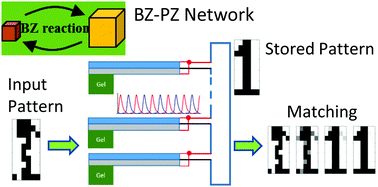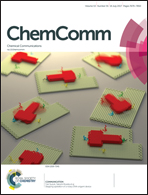Designing self-powered materials systems that perform pattern recognition
Abstract
Inspired by the advances in both materials and computer science, we describe efforts to design “materials that compute” where the material and the computer are the same entity. Using theory and simulation, we devise systems that integrate the behavior of self-oscillating gels and fundamental concepts from oscillator-based computing. We specifically focus on gels that undergo the Belousov–Zhabotinsky (BZ) reaction and thus exhibit self-sustained oscillations. In our models, we couple the BZ gel to an overlaying piezoelectric (PZ) cantilever to create a BZ–PZ unit. By connecting the BZ–PZ units by electrical wires, we design networks that autonomously transduce chemical, mechanical, and electrical energy to propagate a signal across the device and achieve synchronization of the oscillating gels in the network. This synchronization allows the device to perform pattern recognition in a self-organized manner, without the need for external electrical power sources. In particular, we imposed a collection of input patterns onto different BZ–PZ networks, where each network encompassed a distinct stored pattern. The network encompassing the stored pattern closest to the input pattern exhibited the fastest convergence time to the stable synchronization behavior, and could be identified as the “winner”. In this way, the networks of coupled BZ–PZ oscillators achieved pattern recognition. We demonstrated that the convergence time to the stable synchronization provides a robust measure of the degree of match between the input and stored patterns. Through these studies, we laid out fundamental and experimentally realizable design rules for creating “materials that compute”.



 Please wait while we load your content...
Please wait while we load your content...